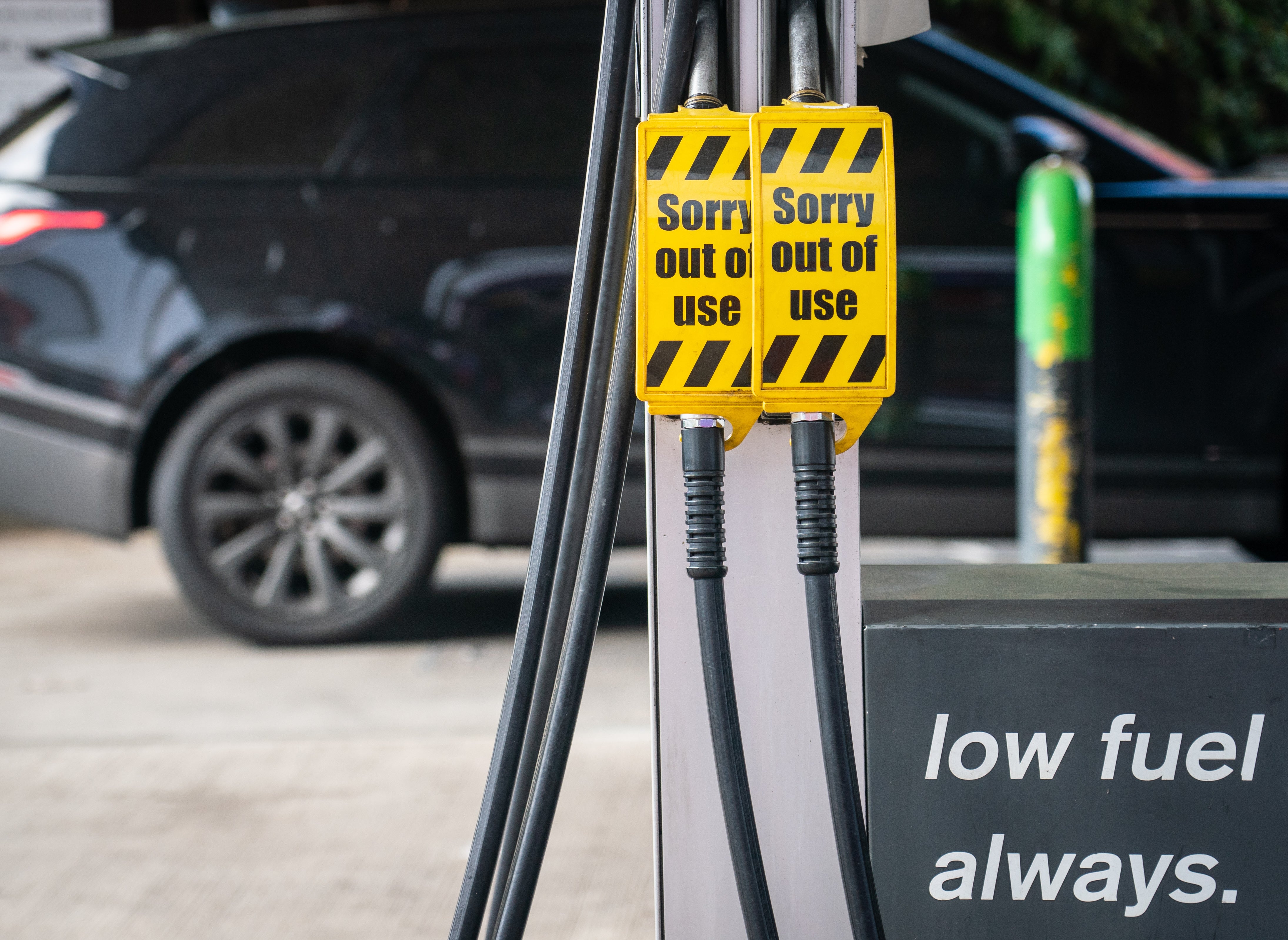Petrol station shortages ‘remain serious’
The Petrol Retailers Association said a ‘large majority’ of forecourts did not know when they would receive their next delivery.

Your support helps us to tell the story
From reproductive rights to climate change to Big Tech, The Independent is on the ground when the story is developing. Whether it's investigating the financials of Elon Musk's pro-Trump PAC or producing our latest documentary, 'The A Word', which shines a light on the American women fighting for reproductive rights, we know how important it is to parse out the facts from the messaging.
At such a critical moment in US history, we need reporters on the ground. Your donation allows us to keep sending journalists to speak to both sides of the story.
The Independent is trusted by Americans across the entire political spectrum. And unlike many other quality news outlets, we choose not to lock Americans out of our reporting and analysis with paywalls. We believe quality journalism should be available to everyone, paid for by those who can afford it.
Your support makes all the difference.Shortages at petrol stations remain “serious” due to fuel not being delivered where it is needed, retailers have warned.
Brian Madderson, chairman of the Petrol Retailers Association, claimed a “large majority” of forecourts did not know when they would receive their next delivery.
He said: “There are many reports of wet sites quickly going dry because the continuity of tankers remains out of kilter with orders.
“The situation in London and the South East remains serious.”
The need to refuel filling stations in London and the South East is even more necessary when customers panic buy, because there are more cars to be filled per station there than the GB average
Mr Madderson said there had been “a welcome improvement” in the region over the weekend with 10% of non-motorway sites running out of fuel, which was “not far behind the rest of the country”.
The figure was based on a survey of a quarter of petrol stations.
He cited figures from motoring research charity the RAC Foundation which indicated that filling stations in London and the South East were used more intensely than those elsewhere.
Mr Madderson said: “These filling stations therefore need to be refuelled more often.
“The need to refuel filling stations in London and the South East is even more necessary when customers panic buy, because there are more cars to be filled per station there than the GB average.”
A Government spokesman said: “Thanks to interventions we have made, forecourt stocks have substantially improved in all regions of the UK.
“We continue to work closely with industry to help increase stocks further.
“As the industry has said, we have ample fuel reserves and the return of normal buying habits by the public has reduced the exceptional demand seen in previous weeks.”
There were currently 151 military drivers deployed to deliver fuel, according to the Government.
The fuel crisis begin when demand surged after BP announced on September 23 it would have to close a handful of its petrol stations.
New figures from the Department for Business, Energy and Industrial Strategy show the average price of petrol at UK forecourts was 137.17p per litre on Monday, up 2p per litre from before the crisis began.
Diesel has increased by 3p per litre over the same period, to 140.66p per litre.
These are the most expensive average prices for petrol and diesel since September 2013.